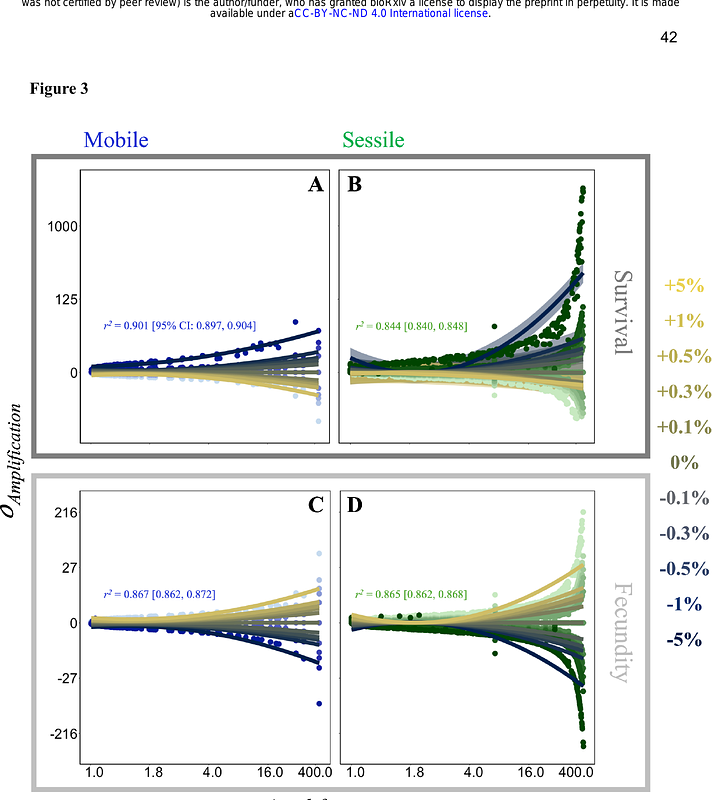Current estimates of population resilience do not predict resilience to directional environmental shifts

Current estimates of population resilience do not predict resilience to directional environmental shifts
Cant, J.; Hernandez, C. M.; Thornley, R.; Hector, A.; Stott, I.; Salguero-Gomez, R.
AbstractNatural systems worldwide are exposed to gradual changes imposed by directional environmental shifts, known as ramp disturbances. However, contemporary assessments of population resilience focus on the resistance and recovery of systems following one-off (i.e., pulse) disturbances. Thus, our current perception of demographic resilience overlooks potential trade-offs associated with countering pulse vs. ramp disturbances. Simulating 50-year ramp disturbance scenarios, we evaluate shifts in both the resistance and capacity to boom (i.e., amplification) following disturbance of 511 populations across 344 species. We also test the extent to which these populations can maintain their resilience despite disturbance-driven impacts to their survival and/or fecundity. We illustrate how existing estimates of resilience fall short in predicting population responses to ramp disturbances. Instead, non-linear patterns in how ramp disturbances reshape the resilience of natural populations underscore an urgent need to quantify how the relative partitioning of energetic resources into survival vs. fecundity informs population resilience. Our findings challenge well-established approaches in forecasting population resilience to ongoing global change.